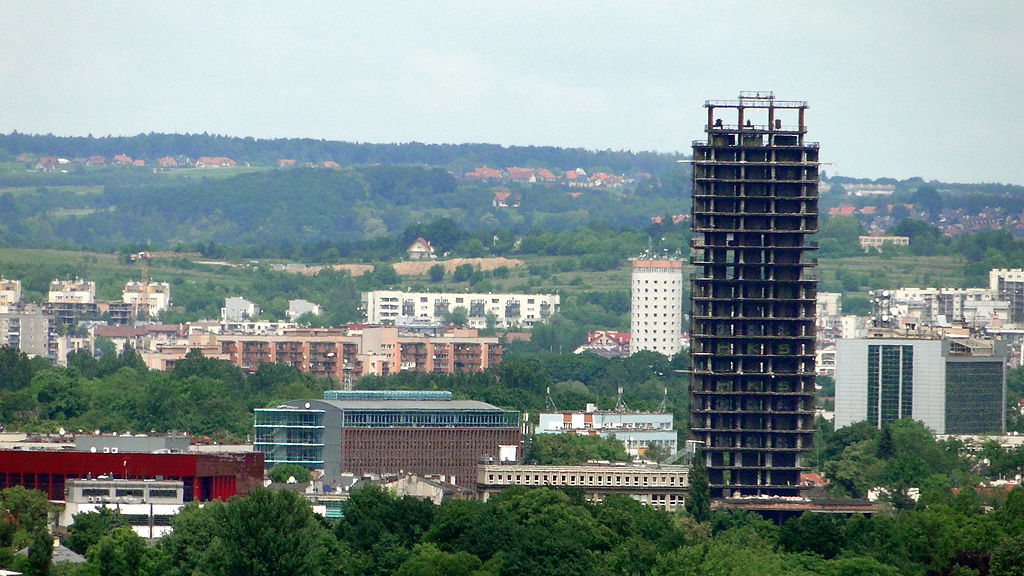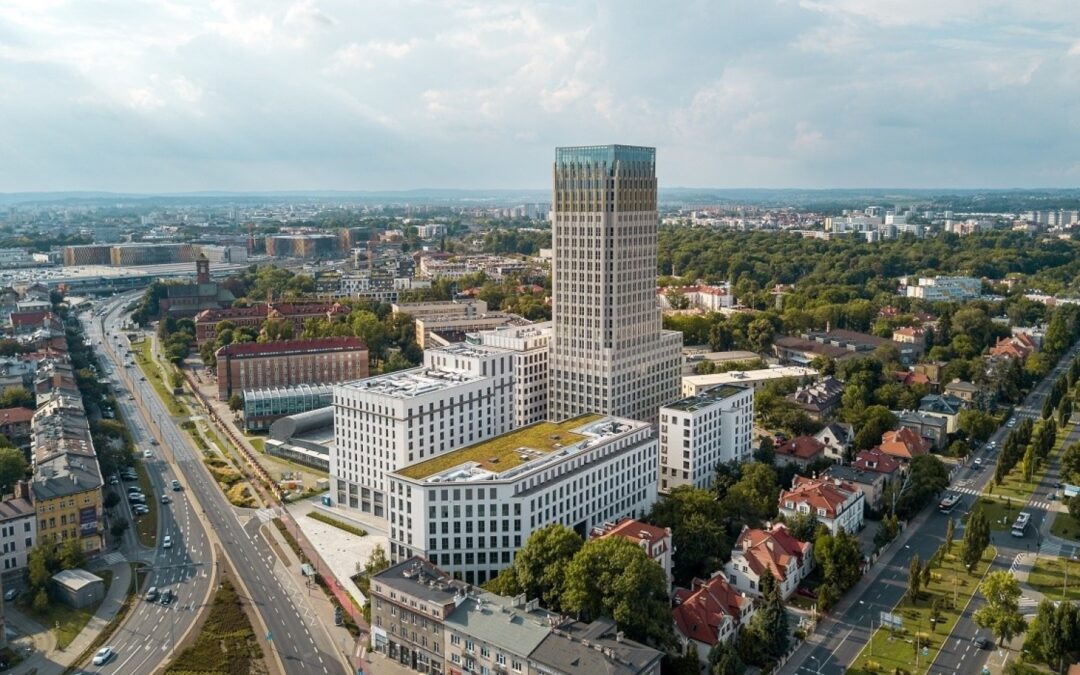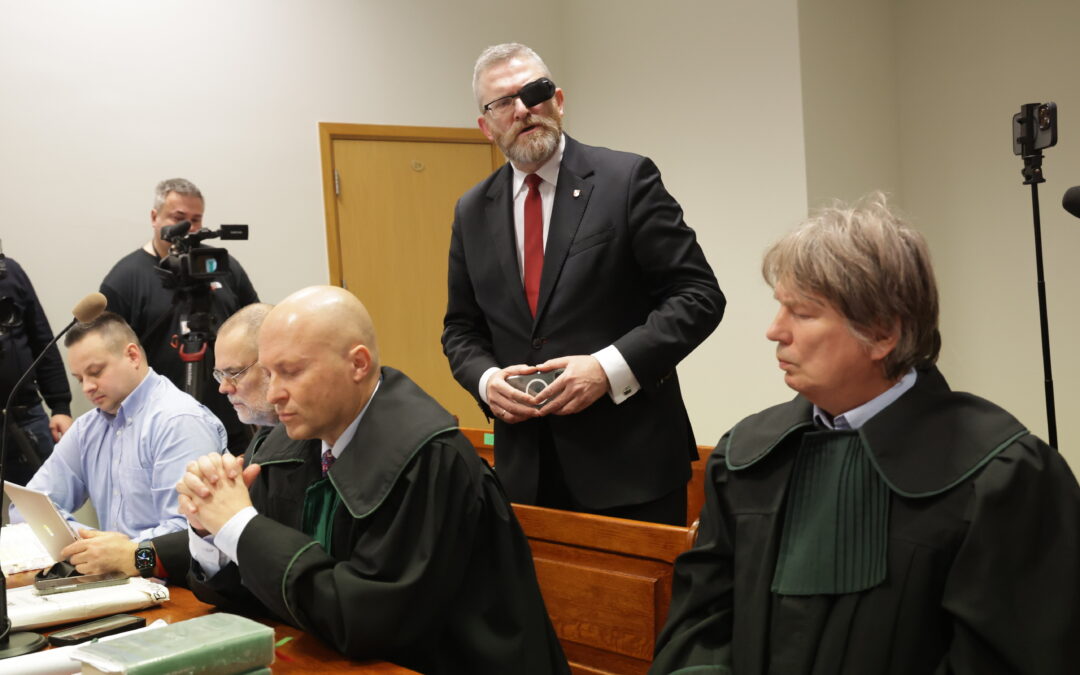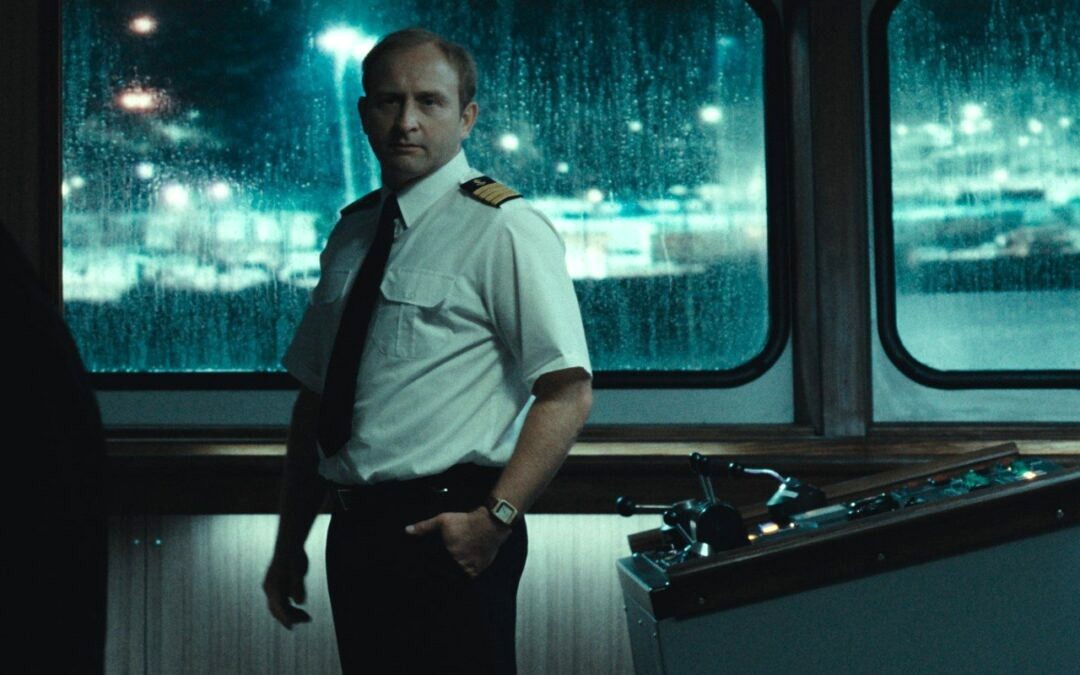A communist-era skyscraper that remained unfinished for decades, earning the nickname “Skeletor” for its notorious skeletal appearance, has finally been completed, becoming Kraków’s tallest building by roof height.
Construction of what is now called the Unity Tower initially began in 1975, but the project was abandoned a few years later due to economic difficulties and political unrest.
Subsequent efforts to finish construction were also abandoned, leaving the empty shell of the building looming over Kraków’s skyline for decades. Only in 2016 did the latest reconstruction project begin, aiming to turn the site into a modern office block.

“Skeletor” as it looked for decades (photo: Wikimedia Commons/Mateusz Giełczyński under CC BY-SA 3.0)
“The construction of the Unity Centre complex is complete. That means that the ‘Skeletor’ era has definitively been consigned to history,” announced the owners earlier this month. The complex consists of five office buildings, with the main tower in the centre.
At 102.5 metres, the Unity Tower is now Kraków’s tallest building by roof height (the K2 building is 105 metres in total, including its antennae).
The design of the new tower was inspired by architecture of the 1920s and 1930s. As well as office space, a terrace has been constructed at the top of the building, with plans to open a restaurant or museum of the building’s history.
Z radością informujemy, że w dniu 30.09.2020 zakończyła się budowa kompleksu Unity Centre. To oznacza, że era "…
Opublikowany przez Unity Centre Piątek, 2 października 2020
The tower, which stands only two kilometres away from Kraków’s UNESCO-listed medieval Old Town, was originally designed to be one of the city’s most modern buildings, housing the regional office of the Central Technical Organisation (NOT).
However, only a few years into construction, funding issues and growing political unrest – including the imposition of martial law in Poland in 1981 – made continuing construction unviable, and the building was left only partially finished.
It subsequently became one of the city’s most recognisable abandoned structures, and earned the nickname “Szkieletor” after the villain from the Masters of the Universe cartoons, which were popular in Poland at the time.
Over the following decades, various investors attempted to restore the building and finish construction, although plans were repeatedly dogged by legal and financial restraints.
In the 1990s, proposals to convert the structure into a hotel or office building were dropped due to questions about the sale of the land. In 2004, a British company’s plan to demolish the shell and erect two apartment buildings on the premises was also rejected.
A year later, the building was bought for 30 million zloty. However, the buyers, TreiMorfa, ran into problems over plans to enlarge and raise the structure.
The project was delayed after complaints from a local nature protection society of Kraków, and a subsequent court case in 2011 revoked the planning permission after errors were found in the planning analysis.
In 2013, a spatial development plan for the area was finally agreed, with construction of the Unity Centre beginning in 2016. On the Unity Centre website, the developers said the tower would be “reborn” as the Unity Tower.
“The name is not a coincidence. We analysed more than a hundred various proposals…It was not an easy feat. Being aware of the emotions this structure evokes and bearing in mind Krakow residents’ sentiments, we finally decided to go for Unity. It is the name which is meant to unite all – both those who love this building and those who hate it.”
The restoration of the building follows other renovations of communist-era skeletons in recent years. Another high-profile case in Kraków was that of Hotel Forum, opened in 1989 as a luxurious modern hotel and restaurant overlooking the Vistula River.
Hotel Forum, Kraków: built in 1989, closed for years, now the perfect venue for brutal beats @unsound @BrutalHouse pic.twitter.com/99MQ4Y772B
— Nick Bax (@nickbax) October 23, 2016
The hotel closed in the early 2000s, allegedly due to a structural fault, and the building lay empty, serving only as the location for Poland’s longest billboard.
In 2013, it was given a new lease of life, as the ground floor was taken over by a popular club and café. It has since hosted many festivals and events, and this year a food court opened there.
However, some other communist-era “Skeletors” in Poland have been demolished, including the Fiat office building in Bielsko-Biała. Construction began in the 1970s, but was stopped in the 1980s due to financial issues, and the building’s shell was used only for advertising space. It was finally demolished in 2008, despite protests from residents, who saw the tower as a symbol of the city.
Wysadzono w powietrze potężny "szkieletor" w Sosnowcu. Zniknął w kilka sekund. https://t.co/AdePyB4x66 pic.twitter.com/vxGfv0PFKO
— PolsatNews.pl (@PolsatNewsPL) November 17, 2016
Main image credit: GD&K Bartosz Kutnowski

Juliette Bretan is a freelance journalist covering Polish and Eastern European current affairs and culture. Her work has featured on the BBC World Service, and in CityMetric, The Independent, Ozy, New Eastern Europe and Culture.pl.




















